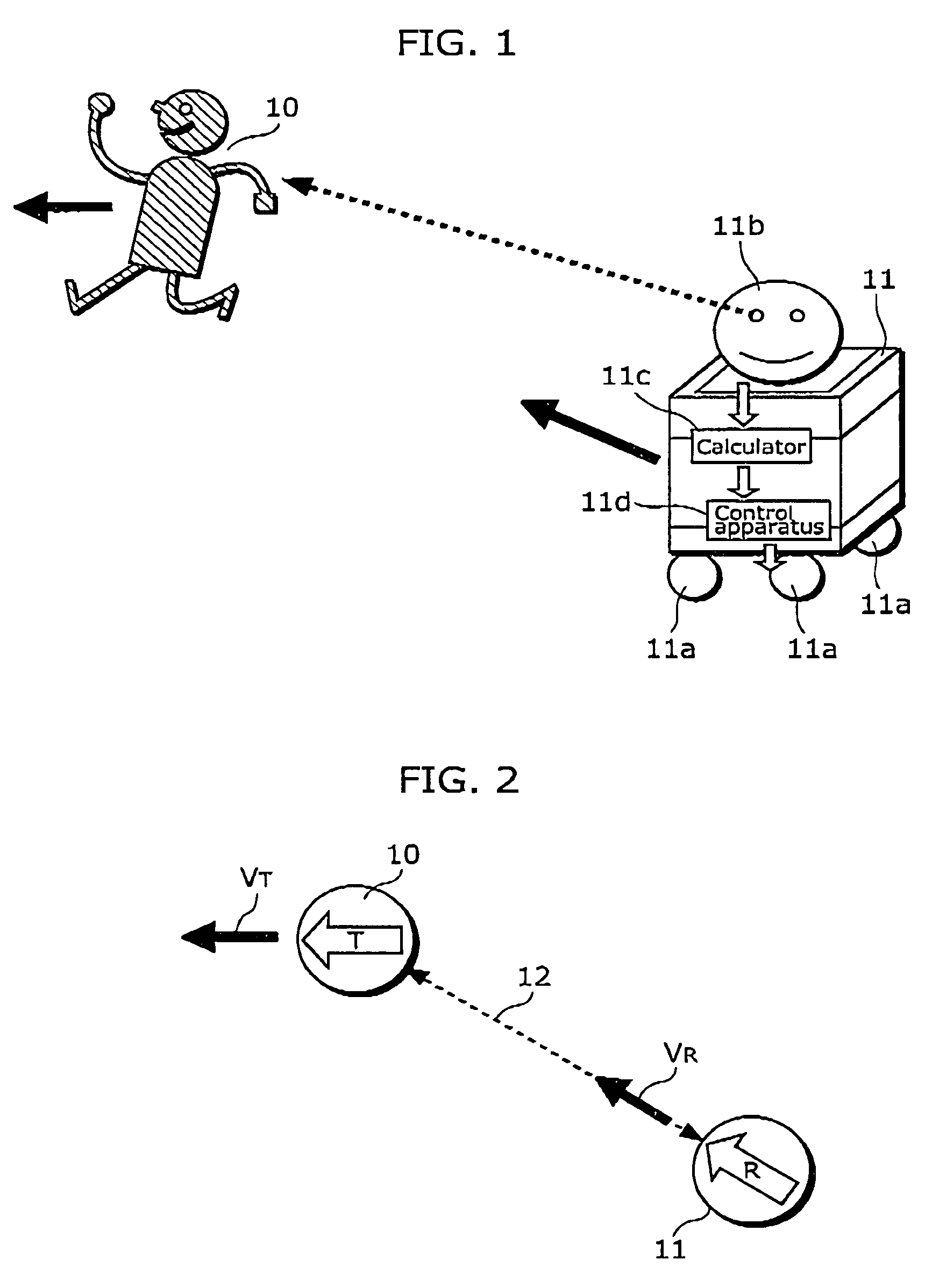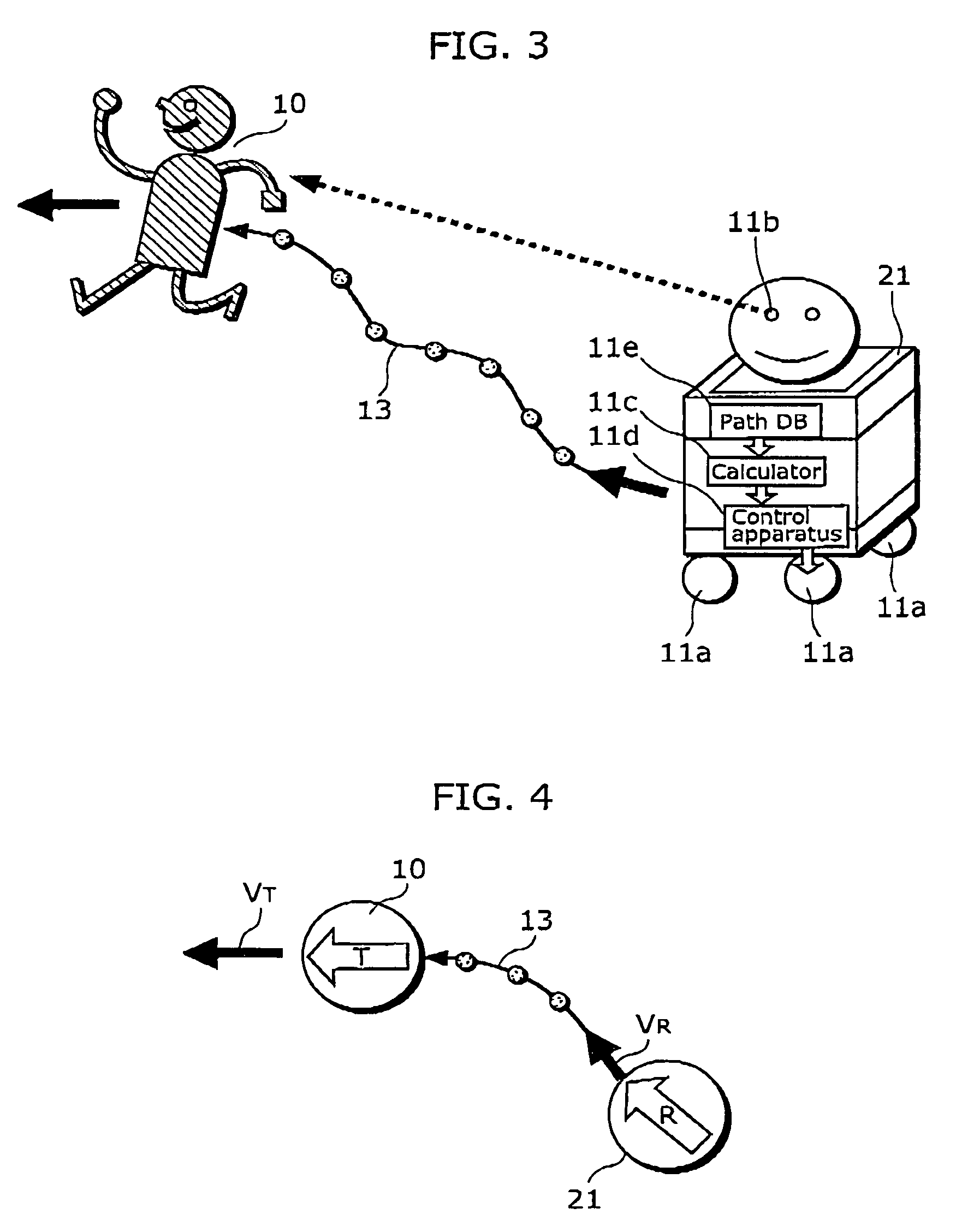Method of controlling movement of mobile robot
a mobile robot and control method technology, applied in the direction of programme control, distance measurement, electric programme control, etc., can solve the problems of causing accidents, requiring significant labor and time in the checking procedure, and causing collisions with accompanied targets, so as to achieve safe and appropriate accompanying behavior
- Summary
- Abstract
- Description
- Claims
- Application Information
AI Technical Summary
Benefits of technology
Problems solved by technology
Method used
Image
Examples
first embodiment
[0073]FIG. 9 is a diagram showing a structure of a mobile robot according to a first embodiment of the present invention. FIG. 10 is a diagram for explaining an accompanying method of the mobile robot according to the first embodiment of the present invention.
[0074]As shown in FIG. 9, the mobile robot 2 is a robot which moves along with an accompanied target 1, and includes: a robot body 2a; mobile mechanisms 2b such as wheels for at least moving the robot body 2a; a measurement apparatus 2c which measures a position and a velocity of the accompanied target 1; a measurement apparatus 2d which measures a position and a velocity of the robot body 2a itself; a calculator 2f which calculates a path for accompanying the accompanied target 1 based on the measurement results by the measurement apparatuses 2c and 2d; a control apparatus 2g which controls the mobile mechanisms 2b so as to move along the path calculated by the calculator 2f; and a detecting apparatus 2e which detects the acco...
second embodiment
[0122]FIG. 23 is a diagram showing a structure of a mobile robot according to the second embodiment of the present invention.
[0123]FIG. 24 to FIG. 29 are diagrams for explaining a change of an accompanying method due to a surrounding environment and the like in the mobile robot shown in FIG. 23. FIG. 24 and FIG. 25 are diagrams showing an example of changing a positional relationship by detecting an obstacle. FIG. 26 and FIG. 27 are diagrams showing an example of changing a positional relationship depending on the degree of congestion in the surrounding environment. Further, FIG. 28 and FIG. 29 are diagrams showing an example of changing a positional relationship depending on a velocity of the accompanied target.
[0124]The structure of the mobile robot 22 according to the second embodiment of the present invention shown in FIG. 23 includes a detecting apparatus 2h which detects a condition of a surrounding environment around the accompanied target 1 and the mobile robot 2, in additio...
PUM
 Login to View More
Login to View More Abstract
Description
Claims
Application Information
 Login to View More
Login to View More - R&D
- Intellectual Property
- Life Sciences
- Materials
- Tech Scout
- Unparalleled Data Quality
- Higher Quality Content
- 60% Fewer Hallucinations
Browse by: Latest US Patents, China's latest patents, Technical Efficacy Thesaurus, Application Domain, Technology Topic, Popular Technical Reports.
© 2025 PatSnap. All rights reserved.Legal|Privacy policy|Modern Slavery Act Transparency Statement|Sitemap|About US| Contact US: help@patsnap.com



